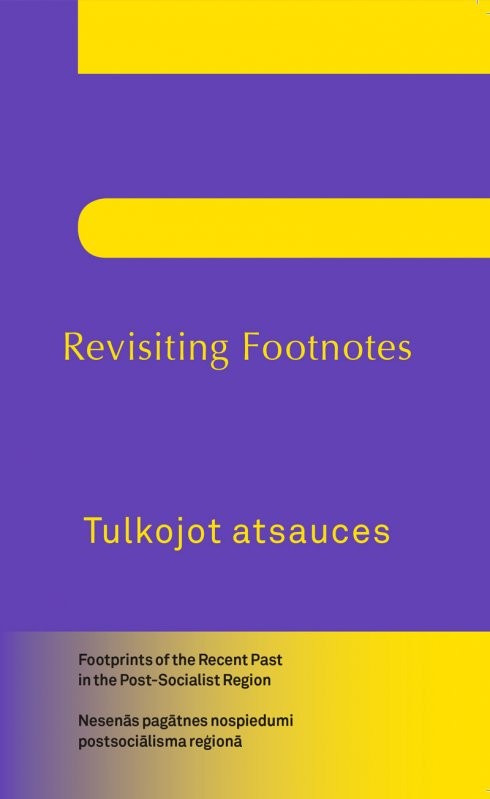Latvian Centre for Contemporary Art is pleased to announce the publishing of the book Revisiting Footnotes. Footprints of the Recent Past in the Post-Socialist Region.
The publication aims to capture and analyse the persistent Soviet era traces and references in art, public space, architecture, society, the field of collective and individual memories. Similar to footnotes in a book, the translated references – various processes, events, artefacts, symbols, systems, mythologies and nostalgias – give a kaleidoscopic commentary, elaborate and bring closer narratives about the recent past.
Editors and compilers of the publication Revisiting Footnotes. Footprints of the Recent Past in the Post-Socialist Region are Ieva Astahovska and Inga Lāce, graphic designer is Monika Grūzīte. The first part of the publication contains essays by Ieva Astahovska (LV), Ilya Budraitskis (RU), Viktorija Eksta (LV), Mārtiņš Kaprāns (LV), Inga Lāce (LV), Davor Mišković (HR), Magdalena Radomska (PL), Mykola Ridnyi (UA), Tanel Rander (EE), Slavs and Tatars (Eurasia), Tamta-Tamara Shavgulidze (GE), Margaret Tali (EE), Sophia Tabatadze (GE), Dovilė Tumpytė (LT) and Ieva Viese (LV). There are visual materials and diagrams illustrating some of the essays using the mapping methods by Vytautas Michelkevičius (LT), Agnė Narušytė (LT) and Lina Michelkevičė (LT) and new media artists Maija Demitere (LV), Paula Vītola (LV), Krista Dintere (LV)and Rihards Vītols (LV).
The second part of the publication translates footnotes of the socialism and post-socialism through artworks that were exhibited in the project’s exhibitions Revisiting Footnotes in 2013 by the artists Arnis Balčus (LV), Aija Bley (LV), Marijan Crtalić (HR), Henrik Duncker (FI), Indrė Klimaitė (LT), Žilvinas Landzbergas (LT), Marge Monko (EE), Lada Nakonechna (UA), Kristina Norman (EE) and Slavs and Tatars (Eurasia).
The contributors of the publication belong to the generation that returns to the consciously forgotten socialist past, yet their interest is rather an attempt to investigate and understand the conditions of contemporary reality that are still tied with this heritage. They explore, interpret and translate this experience through both visual imprints and the interrelationships of their meanings, applying different approaches, such as documentary, reconstructive, anthropological, archival and others. They do not refrain from depicting the dramas that arose from the change of the political and economic systems, instead treating the past and the present as belonging to the same timeline, which also contains potential scenarios for the future.
The publication Revisiting Footnotes. Footprints of the Recent Past in the Post-Socialist Region was made possible due to generous support from the European Cultural Foundation, State Culture Capital Foundation of Latvia, Latvian Ministry of Culture and Arctic Paper.
via: www.lcca.lv
